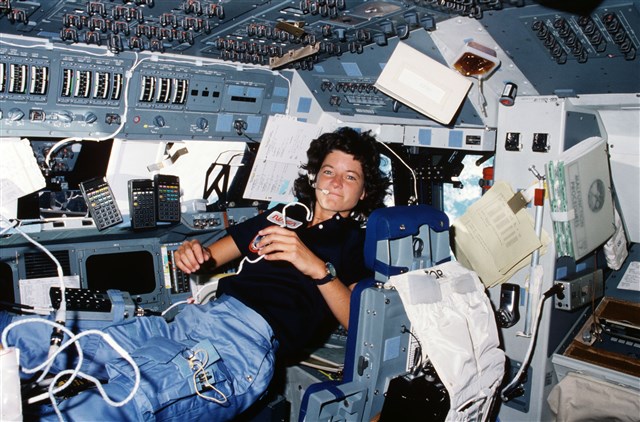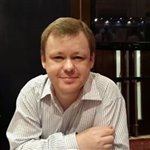On this day in (engineering) history…
June 18, 1983 - Space Shuttle program: STS-7, Astronaut Sally Ride becomes the first American woman in space.
Women have been in space before, so it isn’t as though they can’t live with the stresses it puts on mind and body. Valentina Tereshkova (1963) and Svetlana Savitskaya (1982), from the USSR, have both been there and done that. Now. Saturday, June 18, 1983, Sally Ride will become the first US woman to do the same.

Dr Sally K. Ride in 1984 Source: Wikimedia Commons
Anyone for tennis?
If the world had turned a little differently, Sally Ride might have been discussed as a tennis star, not an astronaut. She began playing tennis aged 10, and won a scholarship to a High School for Girls. At one point she was within the US top 20 on the junior tennis circuit. Over at Swarthmore College, Pennsylvania, Sally showed herself to be an accomplished sportswoman, being a member of the varsity women’s basketball and field hockey teams, while also playing golf. She excelled at tennis, so much so she became the Eastern Intercollegiate Women’s Singles Champion in 1968, retaining the title in straight sets the next year. After just three semesters she left college for life as a tennis pro, only to change her mind after three months. Her sporting prowess would come in handy later on.
The four degrees
To rewind a little, Sally studied English literature and quantum physics (the only woman on the course) at the University of California Los Angeles, getting an ‘A’ in both subjects.
After dropping tennis, she joined Stamford University to study a bachelor of arts in English Literature and a bachelor of science in physics, picking up both in 1973. She added to this collection with a master’s in physics in 1975 and a PhD in astrophysics in 1978, where her thesis topic was the ‘interaction of X-rays with the interstellar medium.’
A front-page ad in The Stanford Daily, the University’s student run newspaper, caught her eye – NASA’s space shuttle program was recruiting astronauts. It was especially interested in getting women on board.
This was in January 1977.
Blasting off the glass ceiling
By now, NASA had realised it needed scientific expertise and skills in its manned missions, as well as good pilots. These new scientific recruits would take part as ‘mission specialists.’
The 1978 intake of astronaut candidates was the first to include women. Of 8,079 applicants, Sally made it into the last 208 and beyond that, into the sixth group of 29 men and 6 women (including Sally). In the week of medical tests and interviews, her physical fitness impressed the doctors, it would become an asset during the training.
The next five years involved rigorous training in scientific and technical skills, parachuting and flight training. To fly on the Shuttle, mission specialists were supposed to be qualified pilots. This was reduced to flying in the second seat of the T-38 Talon training aircraft. If any of them did take the controls, it was only over 5,000 feet. Some astronaut pilots and the more proficient candidates did stretch the rules, flying under 5,000 feet with the candidate controlling the plane.
Sally was among them, piloting a T-38 with the windows blacked out, flying on instruments only. Flying was something she enjoyed so much, she trained for a private pilot’s licence and bought a part interest in a Grumman AA5B Tiger aircraft.
Sally In a NASA T-38 Talon jet. Source: Wikimedia Commons
Her reward for making it through the training program was to be the first female capsule communicator (CapCom) on the second (November 1981) and third (March 82) shuttle missions.
Beside taking part in developing the space shuttle’s famous ‘robotic arm,’ more properly known as the Shuttle Remote Manipulator System (RMS), Sally’s success in the CapCom role and ability to get along with people were factors in winning her the chance to blast off in the shuttle.
Sally’s first space shuttle mission would be on the ill-fated Challenger, as part of STS-7 - the seventh shuttle flight - as flight engineer and mission specialist.
6 days, 2 hours, 23 minutes and 59 seconds
After launching on June 18, the 6 day mission would carry out scientific experiments and (in the first two days) launch two communications satellites - Anik C2 for Telesat of Canada and Palapa B1 for Indonesia.

There…in zero gravity on the Challenger’s flight deck, during mission STS-7 Source: Wikimedia Commons
Sally would operate the robotic arm, especially during the deployment and later retrieval of the Shuttle Pallet Satellite, SPAS-1. This was a batch of ten experiments designed to test the formation of metal alloys in microgravity. The SPAS-1 would be held by the Remote Manipulator arm while it burned its small reaction control rockets (testing its movement on the robotic arm).
For the next shuttle mission, STS-41-G due to blast off on October 5, 1984, commander, Bob Crippen requested her presence as flight engineer.
This mission deployed launched the Earth Radiation Budget Satellite, and carried out more scientific experiments, including eight ‘getaway specials’, experiments designed by interested individuals or outside groups.
When the antenna of one of the OSTA-3 pallet experiments failed to deploy, Sally used the robotic arm to shake (far faster than she had been trained to do) it loose.
Afterward
Back again…on the Challenger’s flight deck, during mission STS-41-G Source: Wikimedia Commons
STS-61-M would be Sally’s next flight - or would have been had Challenger not exploded shortly after launch on January 28, 1986 killing all seven of its crew. Now she would take up a role in the Rogers Commission, a Presidential Commission looking into the tragedy, the only active astronaut and NASA employee on the commission.
When that concluded, a posting at NASA HQ in Washington DC was the next step, heading up the Agency’s first foray into strategic planning.
Leaving NASA in 1987, Sally began work at University of California San Diego in 1989, where she became director of its California Space Institute. She set up her own company, Sally Ride Science, in 2001, to engage children and their teachers in science.
Sally Ride didn’t stop working in science and academia. While she retired in 2007, she continued public outreach with NASA and working as a Professor Emeritus until her death from pancreatic cancer in 2012 at the age of 61.
The fascination with manned space flight has never really gone away. What is it that humans can do that robots can’t, especially now we can deploy AI ?
 By Stephen Phillips - IET Content Producer, with passions for history, engineering, tech and the sciences.
By Stephen Phillips - IET Content Producer, with passions for history, engineering, tech and the sciences.